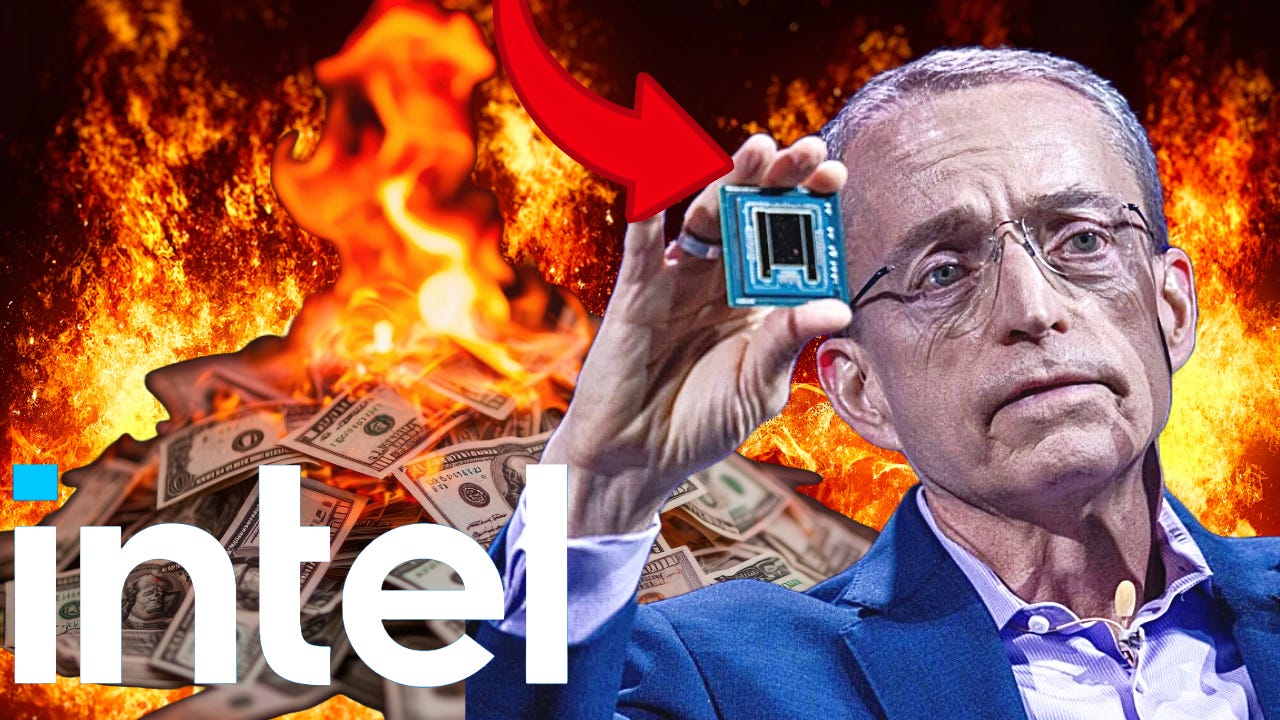Intel is still burning cash, but investors are coming around. Why?
Intel Corporation has recently experienced significant financial challenges, reporting a net loss of $16.6 billion in Q3 2024, the largest in its history. Despite this, the company's stock rallied by 8.4% due to better-than-expected revenue and a positive sales forecast for the upcoming quarter. Intel's Q4 guidance has been a key driver of investor confidence, with new clients and growth in the data center segment contributing positively. However, the company faces challenges with its Gaudi AI chips, which are expected to generate less revenue than initially anticipated. Intel's strategic initiatives, including the launch of new processors and restructuring efforts, are aimed at improving its market position and financial performance in the long term.
Fundamental Analysis
Revenue and Profitability
In Q3 2024, Intel reported a revenue of $13.3 billion, a decrease of $874 million from Q3 2023. The decline was primarily due to a 7% decrease in the Client Computing Group (CCG) revenue and a 44% decrease in Altera revenue. The gross margin also fell significantly, from 42.5% in Q3 2023 to 15.0% in Q3 2024, largely due to non-cash impairments and accelerated depreciation of manufacturing assets. Operating income turned into a loss of $9.1 billion, compared to a near break-even in Q3 2023. The company also recorded substantial restructuring charges and impairments, impacting its profitability. These financial challenges are attributed to strategic shifts, including restructuring and investments in new technologies, which are expected to yield long-term benefits but have short-term financial impacts.
Strategic Positioning
Intel is focusing on its IDM 2.0 strategy, which includes investments in manufacturing capabilities and partnerships to enhance its foundry business. The company is also advancing its AI strategy with new product launches, such as the Intel Xeon 6 processor and the Gaudi 3 AI accelerator. These initiatives are designed to strengthen Intel's competitive position and drive future growth, although the immediate financial impact is mixed due to high initial costs and slower-than-expected uptake in some areas.
Risks
Key risks for Intel include competitive pressures from other chipmakers, particularly in the AI and data center markets, and geopolitical tensions that could affect its global operations. The company's restructuring efforts also pose execution risks, as they involve significant changes to its business model and workforce. These risks could impact Intel's financial performance if not managed effectively, particularly in the near term as the company navigates these transitions.
Technical Analysis
Price Movements
Intel's stock has experienced significant volatility, with a notable rally following the Q3 earnings report despite the record loss. The stock's 52-week range shows a low of $18.51 and a high of $51.28, indicating substantial price fluctuations over the past year.
Key Indicators
The 50-day moving average is $21.70, while the 200-day moving average is $31.91, suggesting a bearish trend as the stock price is below both averages. The RSI is around 40, indicating that the stock is neither overbought nor oversold. The MACD shows a negative trend, with the histogram indicating a bearish momentum.
Support and Resistance Levels
Key support levels are around $18.51, with resistance near $23.57, based on recent price movements. These levels provide potential entry and exit points for investors.
Investment Recommendation
Valuation Insight
Intel's current market capitalization is approximately $99.97 billion, with a forward P/E ratio of 21.48. The stock appears undervalued compared to its historical performance, given the significant decline from its 52-week high. However, the valuation must be considered in the context of ongoing restructuring and market challenges.
Short-term Outlook (3 to 6 months)
The short-term outlook for Intel is mixed. Current market conditions are uncertain, with economic indicators showing weakness. Financial conditions are challenging, with declining revenue and high restructuring costs. The stock is undervalued, offering potential for appreciation if Intel's strategic initiatives begin to show results. However, market volatility remains high, and stock momentum is weak. Given these factors, a HOLD recommendation is appropriate, as the positive and negative criteria are balanced. This strategy allows investors to wait for clearer signs of recovery or further strategic progress.
Long-term Outlook (3+ years)
In the long term, Intel's fundamentals are expected to improve as its strategic investments in technology and manufacturing begin to pay off. The company is undervalued, offering upside potential. Risks are present but are being managed through strategic initiatives. Management is experienced, and strategic investments are aligned with growth objectives. Competitive positioning remains strong, with a focus on innovation and market leadership. Given these factors, a BUY recommendation is appropriate for long-term investors, as the positive criteria outweigh the negatives, suggesting potential for value creation over time.
Explore a detailed analysis of Intel's Q3 2024 financial statement and investment recommendation based exclusively on its financial performance. https://www.askcharly.ai/share/JJcUgifidg
Disclaimer: The information provided in this analysis is for informational purposes only and should not be considered financial or investment advice. Investors are encouraged to perform their own research and consult with a financial advisor before making any investment decisions.


